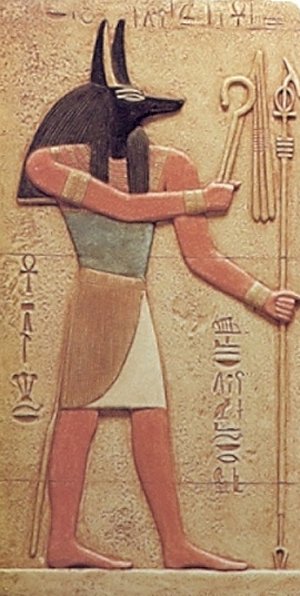 In an ancient hymn to the god Amon-Ra, it is said that “the gods gather as dogs round his feet.” This connection between dogs, humans, kings and the gods goes back thousands of years. They were not only a pet for our ancient ancestors as they are today for many people, but were also adored as gods and even kings took on the title “dog of the sun,” or “head king.”
In an ancient hymn to the god Amon-Ra, it is said that “the gods gather as dogs round his feet.” This connection between dogs, humans, kings and the gods goes back thousands of years. They were not only a pet for our ancient ancestors as they are today for many people, but were also adored as gods and even kings took on the title “dog of the sun,” or “head king.”
This head king we clearly see in Anubis (Anpu), the dog headed Egyptian God of the judgment, protection and the divine guide to the dead for their journey into the afterlife. In later times, during the Ptolemaic period, Anubis was merged with the Greek god Hermes, becoming Hermanubis.
The Cult of Hermanubis was located in uten-ha/Sa-ka/ or Cynopolis, a place whose Greek name simply means “city of dogs”. In the name uten-ha/Sa-ka we can clearly see the ancient Persic name for Sak, meaning “dog.” The word Sak was the name of an ancient tribe called the Sakai or Saka and Sacse, Saha, Sahia, of India; or the Median Straxa, which are all mutations of the same word Sak (dog). The city of dogs is where I believe the story from the dogs of the sun, dog priests and dog kings had begun.
The great historian Pliny located a race of Dog-Men, the Canarii or Ca’Niceps, in western Africa. “Dis Pater; the Greek god Pluto was the ruler of the lower world who is represented as wearing a wolf-skin. The Greek word for dog is ΚΥΩΝ / κύων, Κύνες or kuon (Kyon). In Greek mythology, Kuon Khryseos was a golden dog sent by Rhea to guard the infant god Zeus and his nurse the she-goat Amaltheia.
The name Cynic is derived from the Ancient Greek κυνικός (kynikos), meaning “dog-like”, and κύων (kyôn), meaning “dog.” 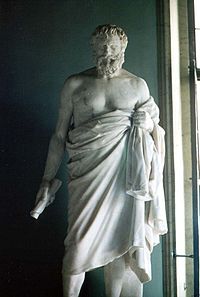 An ancient school of Greek philosophers were known as the Cynics (Greek: Κυνικοί, Latin: Cynici). These philosophers rejected power or wealth for a very simple life, based on virtue and living in harmony with nature; free from all possessions. These were the ancient Greek schools of philosophy where many wise men, sages and adepts had sprung from. The word Cynosarges was a public gymnasium located just outside the walls of Ancient Athens. Cynosarges means the place of the white dog, where the legend of Didymos, an Athenian, received an oracular message saying that he should establish a temple there to Heracles in the place where the dog dropped the offering.
An ancient school of Greek philosophers were known as the Cynics (Greek: Κυνικοί, Latin: Cynici). These philosophers rejected power or wealth for a very simple life, based on virtue and living in harmony with nature; free from all possessions. These were the ancient Greek schools of philosophy where many wise men, sages and adepts had sprung from. The word Cynosarges was a public gymnasium located just outside the walls of Ancient Athens. Cynosarges means the place of the white dog, where the legend of Didymos, an Athenian, received an oracular message saying that he should establish a temple there to Heracles in the place where the dog dropped the offering.
Could these be “the gods gather as dogs round his feet” that Amon-Ra had mentioned or the dog-men (wise men) Pliny had written about?
In my article titled, Wusun Merge With The Saka to Become the Saxons, we can see connections to these cynics in Central Asia that occur approximately around the same Ptolemaic period in Egypt where the Cult of Hermanubis was thriving. In that article I had detailed the connection of this tribe in ancient Central Asia called the Saka (Ancient Persic for dog) who had merged with another tribe called the Wusun (Usun) to become the Saxons. Albinus confirms this by saying, “The Saxons were descended from the Ancient Sacae (the Sakas) of Asia, and that eventually they were called Saxons” and Pliny says that the Sakai who settled in Armenia, were named Sacassani. Ptolemy also mentions that a Scythian people sprung from the Sakai, by the name of Saxones.”
There are the Saxon mythological stories of Gwrgi Garwlwyd, or the Rough-Brown Dog-man that are described as, “The three disgraceful traitors who enabled the Saxons to take the crown of the Isle of Britain from the Cymmry. The first was Gwrgi Garwlwyd, (literally the Rough-Brown Dog-man), the second was Medrawd, who with his men united with the Saxons, that he might secure the kingdom to himself against Arthur; and, the third was Aeddan, the traitor of the North, who, with his men, made submission to the power of the Saxons, so that they might be able to support themselves by confusion and pillage, under the protection of the Saxons. On account of these three traitors, the Cymmry lost their land and crown in Lloegria.”
The derivative of the Greek Kuon we can find in the word Cu or Con which means dog in Gaelic. From the Greek kuon to the Gaelic Cu/Con, we get the English word cunnin or the adjective cunning; which means shrewd, wise, learned, or foreseeing and also the word cunnan, to know. A cunnin man is one who reveals secrets, foretells events.
The old Irish used the word Cu, a dog, or hound, as a designation of honor to denote a hero, fierce warrior or king. The term Ci-cingeach, translated ” leader,” is equivalent to the head dog or leader of a pack, or the brave head or leading hound. In Britain, we find Cu as in Cunobelin: the head king, the solar king and dog of the sun. In Irish folklore, they say that it is not safe to ask a dog a question, for he may answer, and should he do so, the questioner will surely die.
The Cù Sìth (Scottish Gaelic pronunciation: kuː ʃiː) is an enormous, otherworldly hound, said to haunt the Scottish Highlands. Roughly the size of a cow or large calf, the Cù Sìth was feared as a harbinger of death and would appear to bear away the soul of a person to the afterlife (similar to the manner of the Grim Reaper). Supernatural dogs in the legends are usually completely black, or white with red ears. Amongst the the Scythians or Picts of Ireland and Scotland in place and personal names, Cu-chulainn, Cu-ulad, Conan (Cunan), etc., echo atime when the Kynesii or Kynetes, or Dog-men and Celts lived together (Prof. Mackinnon).
Many names such as Cu-mara, hound of the sea or the Pictish name Constantine (Cusantin). The name Cusantin (Constantine) is derived from the Gaelic Cu and Conn. As stated above, Cu means Dog and the old Irish con or conn, wisdom or sense; genitive of cu, a hound, and figuratively applied to a warrior (Annals of Ireland). This English meaning is derived from the Greek name Cynic (κυνικός or kynikos), meaning “dog-like.”
Constantine I of Scotland, in Latin “Constantín mac Fergusa” and in English, “Constantine son of Fergus.” Constantine I was 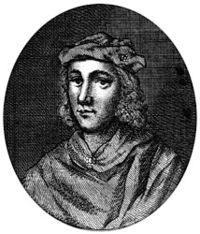 king of the Picts (or of Fortriu), in modern Scotland, from 789 until 820. He is credited with having founded the church at Dunkeld which later received relics of St Columba from Iona. Also Cusantin mac Aeda who is Constantine II. He was also a king of the Picts and died in 877. Many Scottish clans, as well as the British Royal Family, House of Saxe-Coburg and Gotha, (through the House of Dunkeld ).
king of the Picts (or of Fortriu), in modern Scotland, from 789 until 820. He is credited with having founded the church at Dunkeld which later received relics of St Columba from Iona. Also Cusantin mac Aeda who is Constantine II. He was also a king of the Picts and died in 877. Many Scottish clans, as well as the British Royal Family, House of Saxe-Coburg and Gotha, (through the House of Dunkeld ).
These Great Dog kings can then be seen in ancient Ireland under the names as “Cu”, such as the “Hound of Ulster;” Cú Chulainn or his foe Cú Roí (Cú Ruí, Cú Raoi) mac Dáire, “hound of the battlefield” who is a king of Munster in the Ulster Cycle of Irish mythology. He is the son of Dáire mac Dedad (or Dáire Doimthech), and thus belongs to the Clanna Dedad. The Dáirine (Dárine, Dáirfine, Dáirfhine, Dárfine, Dárinne, Dairinne), later known dynastically as the Corcu Loígde, were the proto-historical rulers of Munster before the rise of the Eóganachta in the 7th century AD. They appear to have derived from the Darini of Ptolemy and to have been related to the Ulaid and Dál Riata of Ulster and Scotland.
This would make perfect sense because the Ptolemies of Egypt were the last ruling dynasty in Egypt in the year 301 B. C and were also the followers of the Cult of Isis and The Cult of Hermanubis.
A black dog is the name given to a being found primarily in the folklores of the British Isles. The black dog is essentially a nocturnal apparition, often said to be associated with the Devil or a Hellhound. Its appearance was regarded as a portent of death.
On the Isle of Man (red) in the Irish Sea (Manx Sea) that lies just between Ireland and Wales, it is said in ancient times that guard dogs had kept watch there of the sacred fire of Baal. The God Baal was worshiped by the Hebrews, Babylonians, Canaanites, Phoenicians, and even the Druids who had a stronghold in these parts and who were also the descendants of the same said peoples of the East (Cult of Isis and The Cult of Hermanubis). In the Isle of Man is the legend of the Moddey Dhoo; black dog in Manx), also styled phonetically Mauthe Doog or Mawtha Doo (double ‘D’ pronounced ‘th’). It is said to haunt the environs of Peel Castle. People believe that anyone who sees the dog will die soon after the encounter with the dog. There are two places named dog-town and whelp’s-ford, Bal-na-madadh, and Adh-chuillean, where guard dogs kept watch of the sacred fire of Baal.
“Can the Cu-shite change his skin?” in Jeremiah 13:23
From the Greek Kuon and the Gaelic word for dog, Cu; we can also see a connection to the Biblical Cush (also Kush, Biblical כּוּשׁ Kûš), the eldest son of Ham, brother of Mizraim (Egypt), Canaan and the father of the Biblical characters Nimrod, and Raamah. In the Chaldee, chaos is said to be the pronunciation of Cush and is also written Khus (Chus) and is derived from Khawos (Khaos) or “Chaos.”
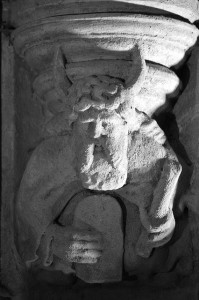 Moses married Adoniah the queen, the Cushite, wife of Kikianus, and was made king over the Cu-sh. Cush which means chaos is the father of Nimrod whose name means the “leopard who subdues” or the “leopard tamer.” In Hebrew, Nimrod signifies spotted. Hence, yes Jeremiah, the Cu-shite can change his skin and even a leopard its spots. Please also remember where I stated that it was the Biblical Cush who was the brother of Canaan and it is from the Latin word for Dog, Canis where we can see the connection from the Greek Kuon, to the Gaelic Cu, English Canine and also ancient Biblical land of the Canaanites known as Canaan.
Moses married Adoniah the queen, the Cushite, wife of Kikianus, and was made king over the Cu-sh. Cush which means chaos is the father of Nimrod whose name means the “leopard who subdues” or the “leopard tamer.” In Hebrew, Nimrod signifies spotted. Hence, yes Jeremiah, the Cu-shite can change his skin and even a leopard its spots. Please also remember where I stated that it was the Biblical Cush who was the brother of Canaan and it is from the Latin word for Dog, Canis where we can see the connection from the Greek Kuon, to the Gaelic Cu, English Canine and also ancient Biblical land of the Canaanites known as Canaan.
The Hebrew spelling of the word “dog” is “celev”, which is identical to the name Caleb (keleb) – כלב. Caleb is called “my servant” by God in Numbers 14:24, a position of the highest honor heretofore used only for Moses. The early Medieval King Kaleb of Axum was the most well-known monarch of this kingdom located in modern Ethiopia..
The Greek name of “Kuon” we can also find associations in ancient Asia such as Thauk Kuon, (Taoukwang) king of U’di; who rules over the great kingdoms and a multitude of umbrella-wearing chiefs to the eastward. In Japan, you will find name “Ku”which is short for Kuon such as the capital city of Kumamoto (熊本市, Kumamoto-shi) on the island of Kyushu, Japan.
Chinese guardian lions, known as Shishi (Chinese: 石獅; pinyin: shíshī; literally “stone lion”) or Imperial guardian lions; also often called “Foo Dogs” in the West, are a common representation of the lion in pre-modern China. They have traditionally stood in front of Chinese Imperial palaces, Imperial tombs, government offices, temples, and the homes of government officials and the wealthy from the Han Dynasty (206 BC-AD 220), and were believed to have powerful mythic protective benefits. The Han Dynasty can also be connected to the ancient Saka (Ancient Persic for dog) who had merged with another tribe called the Wusun (Usun). The actual first description of Wusun may be found in a Western Han dynasty book of divination, the Jiaoshi Yilin.
The Mongol dynasty rulers had taken the title of Kaan/Kahn/Khan which is originally a Mongol and subsequently Central 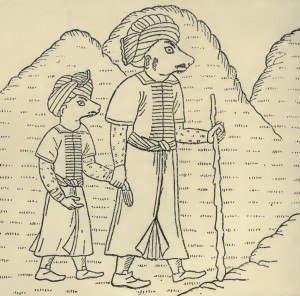 Asian title for a sovereign or military ruler, widely used by medieval nomadic Turko-Mongol tribes living to the north of China. The word Khan can be easily connected to the Greek kuon and even the Latin word for Dog; Canis, which can be seen in the medieval story titled, “Dog-Headed Tartars.” In the story the authors use the epithet,“dog-headed” when speaking of their old enemies the Tartars. It is also said that medieval travellers who wrote in Latin, speak of the Great Khan of Tartars as “Magnus Canis;” the ‘Great Dog.’ Many great conquerors took the imperial title Khaqan (“Khan of Khans“) which applies to probably the most famous rulers known as Khan, such as the thirteenth century Batu Khan and the most infamous of the Mongol imperial dynasty, Genghis Khan.
Asian title for a sovereign or military ruler, widely used by medieval nomadic Turko-Mongol tribes living to the north of China. The word Khan can be easily connected to the Greek kuon and even the Latin word for Dog; Canis, which can be seen in the medieval story titled, “Dog-Headed Tartars.” In the story the authors use the epithet,“dog-headed” when speaking of their old enemies the Tartars. It is also said that medieval travellers who wrote in Latin, speak of the Great Khan of Tartars as “Magnus Canis;” the ‘Great Dog.’ Many great conquerors took the imperial title Khaqan (“Khan of Khans“) which applies to probably the most famous rulers known as Khan, such as the thirteenth century Batu Khan and the most infamous of the Mongol imperial dynasty, Genghis Khan.
The Rourans were the first people who used the titles Khagan and Khan for their emperors. In Turkestan is the legend of “King Cambellannas, son of the great Khan,” by which legend is probably meant Timur; who reunited the numerous small kingdoms into which about 1350 Dschagati had fallen. King Cambalech, “Rex Cambalech hoc est magnus cannis,” “King Cambalech that is, the Great Khan,” (Canis Magnus, Canis Grandis) or ‘le Grant Chien’ is represented in picture as ruling Cathay, and the King of India is represented on horseback with sword in hand.
33rd Degree Freemasonic Author, Manly P. Hall says this about the symbol of the dog in his infamous book, “The Secret Teachings of all Ages” – The dog, because of its faithfulness, denotes the relationship which should exist between disciple and master or between the initiate and his God. The shepherd dog was a type of the priestcraft. The dog’s ability to sense and follow unseen persons for miles symbolized the transcendental power by which the philosopher follows the thread of truth through the labyrinth of earthly error. The dog is also the symbol of Mercury. The Dog Star, Sirius or Sothis, was sacred to the Egyptians because it presaged the annual inundations of the Nile.
Could all these royal dynasties and king dogs of the sun be traced back to the dog men (wise men), also known as the Cynics of the Cult of Hermanubis located in the city of the dogs, Cynopolis?
Related articles

Moe is the founder of GnosticWarrior.com. He is a father, husband, author, martial arts black belt, and an expert in Gnosticism, the occult, and esotericism.



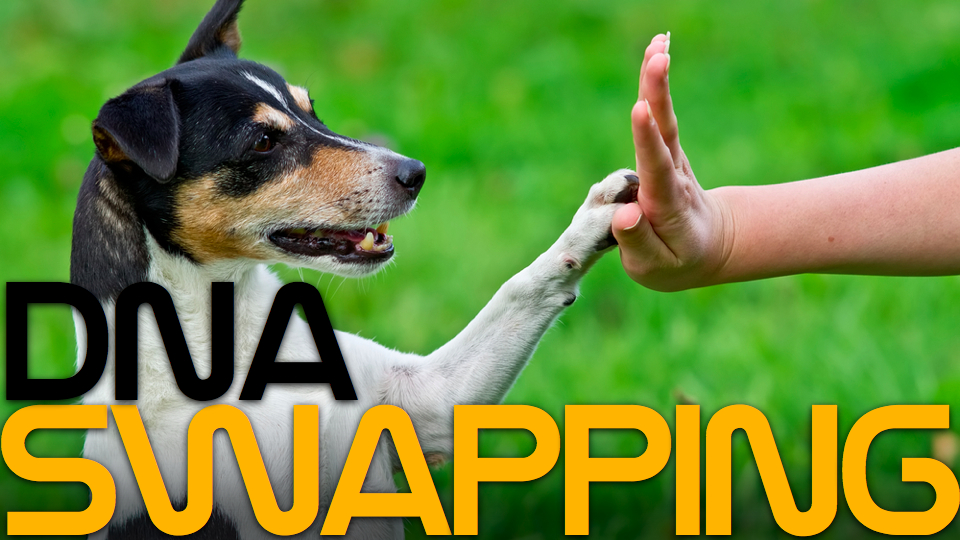
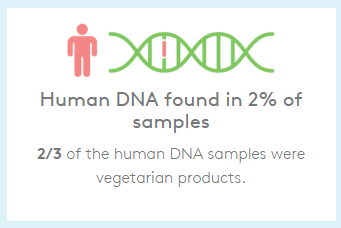
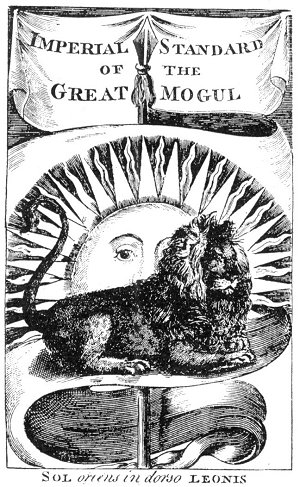

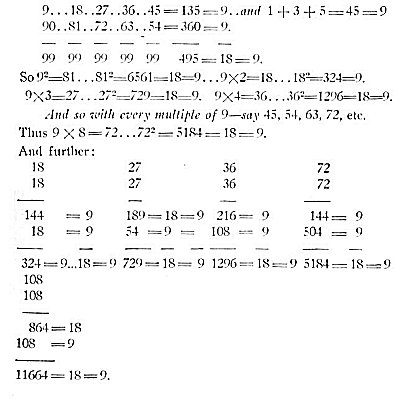
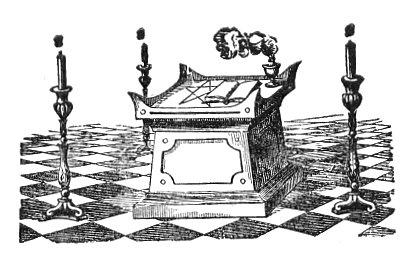
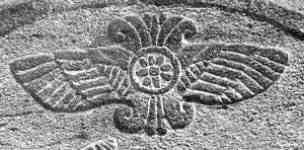
The only indicator that is a reason to believe in probability is within practical predictions of which every one has been so vigoursly vainly futile but done. They and them in our homeland and it’s benefits are lovers but not of America traditionally just it’s liberty in which the difference is made up by law and order. Freedom is our great achievement by the revolutionaries sacrifice for ideas and philosophy envisioned and testified by the patriarchs of our manifold various diverse men and women to do that work unto victory in our homeland. To know what secret society is hoping for and the truth in this is a victory man in psychological deficits aroused by power only in the psyche and believd by the rich is a advantage of the poor . It’s not the end yet but it is the tip of the iceberg. Much detail for eyes 👀👁️ to validate and confirm before neccesity dictates through the ranks of righteousness movements and strategy against the obstacles choosing to stand in the WAY of the one straightening out the crooked for the King to have prepared the Way with ease however bitter the end it Will be sweet.
ns
It’s all known at the origin and source. There is simple resolve and answer. No eloquence of description and details that are intelligent design and old tactical ever working successful victory of many. I am a man and only a layman new under the sun in image alone once ever to be alive. Evil knows not of loss over humans in human is no power even united intelligent totally compared to celestial forces just as old and aged as created in order described in scripture. Point is that man is subject to the power ruling our world also in scripture. Great is that One creater unexplainable mysterious reasoning of manifold various distributions in scripture. My advice is to see first that magic or sorcery and satanism in a nutshell is a empowerment of psyche and the truth is that the layman and common people are yet to be infected by what only idol hands and inertia give freedom and liberty too. To know what is pitied for by the unnoticed whom are enough to the rest of the most is richer classes pay the most money for what fools have already done. Time is the unknown fashioned ultimate unchanging occurance too be right in all matters light and heavy pulling and pushing gravitate complelled man or celestial no difference to an unchangeable wisdom of everything already done as a writer is so long in unique creative genuis until finished. Still after published and sold unsatisfied for reason of regret in seeing the flaws missed now to late to fix. Not so our experience all together human begining to end flawless and perfectly finished. Published is an understatement. No need to resist the best of evil when it’s prophecies to achieve and attain in all the effort and work all wanted and desired. Inevitable but true as an infant’s cries so deal with it and look at the local problem in front of you. Attempt at becoming a barrier or obstacle overcome by the enemy but it’s not foolishness to stand alone between innocent and what you love and the legions of enemies. Let love inspire sacrifice that is the empowering force of morale in the eyes of the world to be defeated atleast give the only justifiable hell to hell itself in war no rules apply to defending and protection of the helpless and innocent. It’s a fact reality is no prerapture is to occur and all will either endure or die. Tyrrany is not yet indicated by the ways philosophy envisioned. The rich still have security in ethic of markets, exploitation, profiteering.etc., It’s at the local level and property there in it to be threatened for citizens to initially start asking right questions. If the common people are ignored and given no reasonable response. The tyrant of the people masked as hero and victor of democracy for the people will be very easily chosen to be the one who will lead until the needs are to many and not enough for the people to work out and also satisfy needs. The end is tragic and inevitable but it is survivable and it’s few righteous will fulfill everything scripture says. Either run or stand between evil and your family, home, innocent dying for love and relentless to subjecting yourself to the Sitre HaRa. It’s not yet but possible and probable until scriptures are revealed in eschtolgical effect. May the children have children and the time still give us what is common good for all mankind….selah…selah…. Shalom!